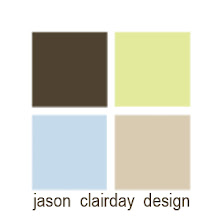So, here is the second entry on how designers may charge you as a client, and how the design industry works. Last time I talked about designers who just charge an hourly fee. Today I will simultaneously tackle options #2 and #3: designers who only get paid through designer discounts, and designers who both charge an hourly fee and collects the designer discount.
Designers have a wealth of product knowledge (or should have), and they usually rely on a few showrooms to provide them with the product(s) they need. Where a designer shops and takes you shopping is largely dependent on the trade pricing offered to the designer for bringing clients into that particular showroom. Retail discounts vary widely in the industry, but they usually fall somewhere between 10-20%. Often, you as a consumer can negotiate a better price when buying furniture yourself, but it will never be as low as what the designer cost. Obviously, the designer usually stays loyal to a showroom where he/she receives the biggest discount. The designer then passes the cost savings to you. This is usually a huge benefit for all involved.
Having said that, many chain retail locations do not offer trade pricing, as their products are usually priced to sell more easily, e.g. the Wal-Mart strategy: lower prices equals more quantity. So don’t expect your designer to shop with you at these places, unless you have negotiated a hourly fee across the board from the start.
There is also another little twist to this story. There are locations in every major city that sell to the trade only. This means that the public may (or may not) be able to enter these bastions of style to peruse, but they will need to employ a designer to purchase. And whatever you do, don’t expect to get a price quote from showroom attendants. The classified secrets of the Pentagon are more easily obtainable. The price that the designer gets here has already been discounted, and the designer will usually add 20% and give you an invoice on his/her pretty stationary. Nice, huh? This should be used for those instances where you, the consumer, want a really special key piece, as this can be expensive.
Most designers, myself included, use a combination of both an hourly fee and the discount given to us by the retail locations that cater to us. This is, in my opinion, a fair solution. For example, I start working with a client and we are developing a concept, color scheme, mood, etc. At this time, I may do some computer renderings of the space, develop a furniture plan, and pick out a palette of fabrics. I am going to charge by the hour for this work. Once we start to shop for the major pieces of furniture (I usually source things out beforehand to streamline the process), I stop charging an hourly fee, and I am paid by the difference between the retail price of an object and the discount given to designers. I always make my clients aware of the entire process from the start. Then, if I am to pick out accessories, artwork etc. I ask the client to give me a budget, and then I bring / purchase items for them to approve. The client either gives me the money that is in the budget for such items, or I purchase them and get reimbursed.
I know that this all seems like a lot of work. The client, however, really does not (and should not) feel like this is a burden. This should be fun, educational and most of all exciting. There is nothing more enjoyable to me as a designer than to receive a phone call from a client after an installation with a tone of elation.
Hopefully, this little information can help you as a potential client to a designer and as an informed consumer (and you if are in the Boston area, please feel free to look me up). I realize that this info may make my industry sound a little off-putting and sneaky. At the end of the day, it is not meant to do so. A designer can save you thousands of dollars per project. You will be more likely to make the right decisions, you will have access to many more product lines than you can imagine, and you will have a unique living space that speaks to you, reflects your tastes, and makes you proud.
Subscribe to:
Post Comments (Atom)

No comments:
Post a Comment